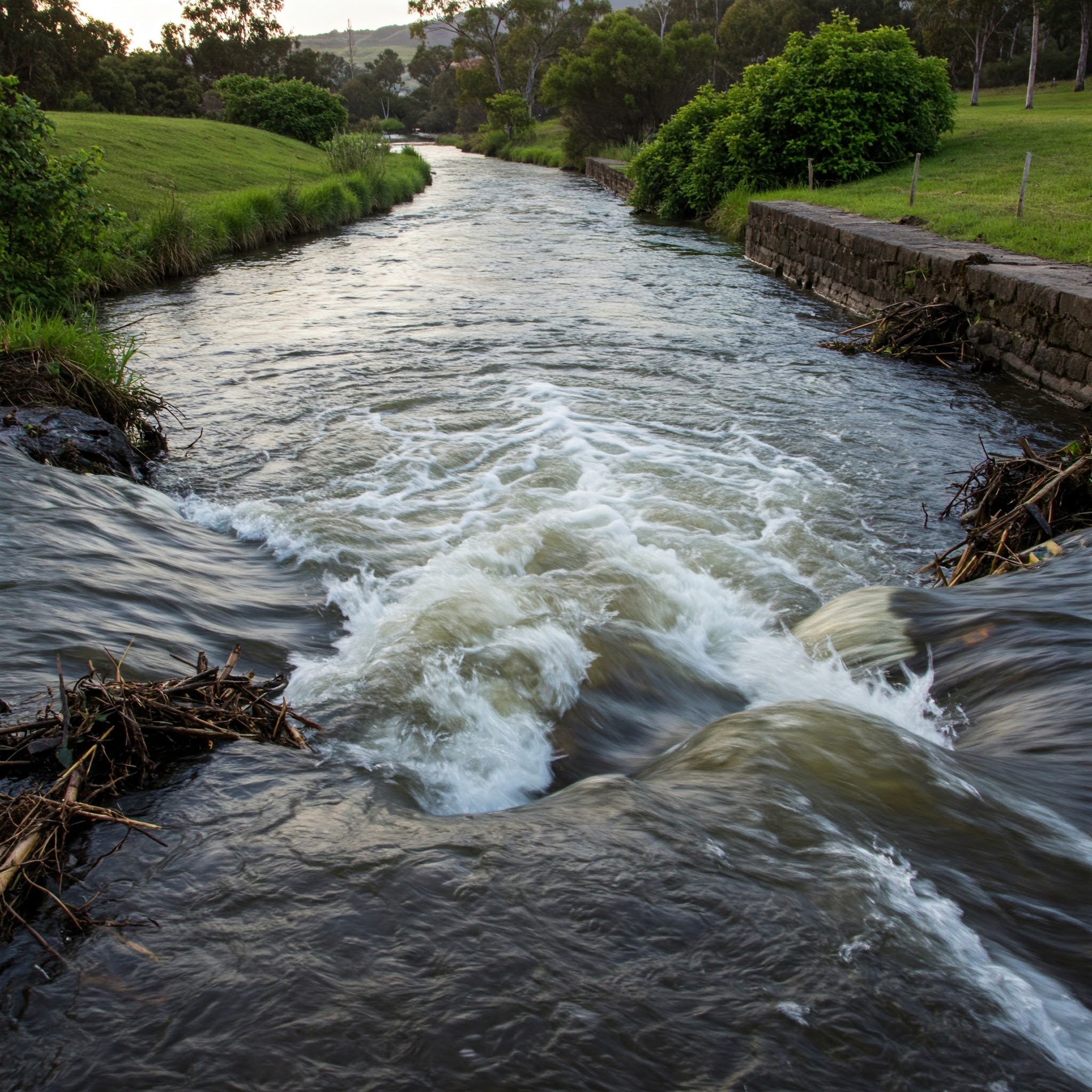Peak Discharge from Drainage Basin Runoff
Peak Discharge from Drainage Basin Runoff Formula |
||
| \( Q \;=\; c \cdot i \cdot A \) | ||
| Symbol | English | Metric |
| \( Q \) = Vapor Mass Velocity of Tray Type Tower | \(cfm\) | - |
| \( c \) = Rational Method Runoff Coefficient | \(dimensionless\) | - |
| \( i \) = Rainfall Intensity | \(in\;/\;hr\) | - |
| \( A \) = Drainage Area | \(acre\) | - |
 Peak discharge from drainage basin runoff is the maximum flow rate of water passing through a specific point in a drainage system (like a river or stream) after a rainfall or snowmelt event. It represents the highest volume of water per unit of time occurring at the outlet of a drainage basin or watershed during or after a storm. Understanding peak discharge is used in hydrology for flood forecasting, designing stormwater management systems, and flood prevention strategies.
Peak discharge from drainage basin runoff is the maximum flow rate of water passing through a specific point in a drainage system (like a river or stream) after a rainfall or snowmelt event. It represents the highest volume of water per unit of time occurring at the outlet of a drainage basin or watershed during or after a storm. Understanding peak discharge is used in hydrology for flood forecasting, designing stormwater management systems, and flood prevention strategies.
Rational Method Runoff Coefficient |
|
| Ground Cover | Runoff Coefficient |
| Asphault Streets | 0.7 - 0.95 |
| Brick Streets | 0.7 - 0.85 |
| Buisness Areas | 0.5 - 0.95 |
| Concrete Streets | 0.7 - 0.95 |
| Cultivated Land | 0.08 - 0.41 |
| Forest | 0.05 - 0.25 |
| Industrial Area | 0.5 - 0.9 |
| Lawn | 0.05 - 0.35 |
| Meadow | 0.1 - 0.5 |
| Parks, Cemeteries | 0.1 - 0.25 |
| Pasture | 0.12 - 0.62 |
| Residential Area | 0.3 - 0.75 |
| Roofs | 0.75 - 0.95 |
| Unimproved Area | 0.1 - 0.3 |
Key Points Influence Peak Discharge
Rainfall Intensity and Duration - More intense and prolonged rainfall will result in a higher peak discharge.
Basin Size and Shape - Larger and steeper basins tend to have a quicker and higher peak discharge due to the faster runoff.
Soil Type and Vegetation - Soils that absorb water slowly, along with minimal vegetation, lead to higher runoff and peak discharge.
Land Use and Urbanization - Urbanized areas with impervious surfaces (like concrete) prevent water infiltration, leading to quicker runoff and higher peak discharge.
Antecedent Moisture Conditions - Wet soils prior to rainfall will absorb less water, increasing the runoff and peak discharge.

